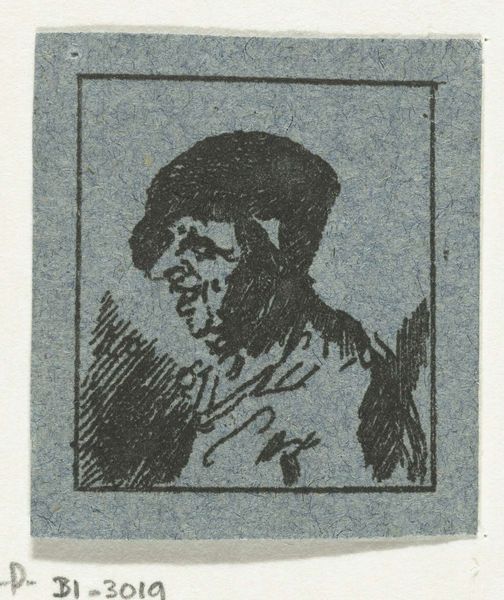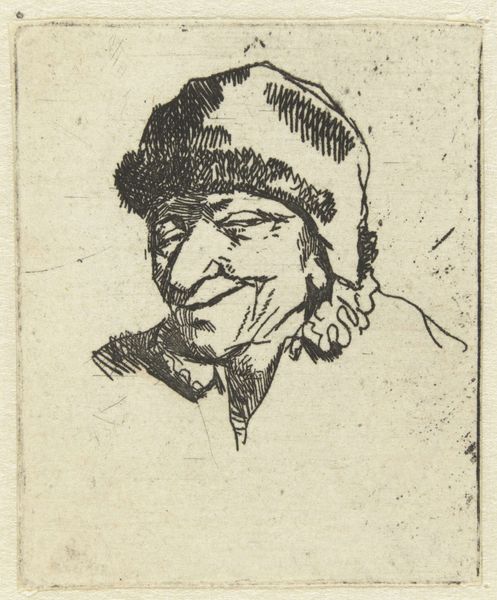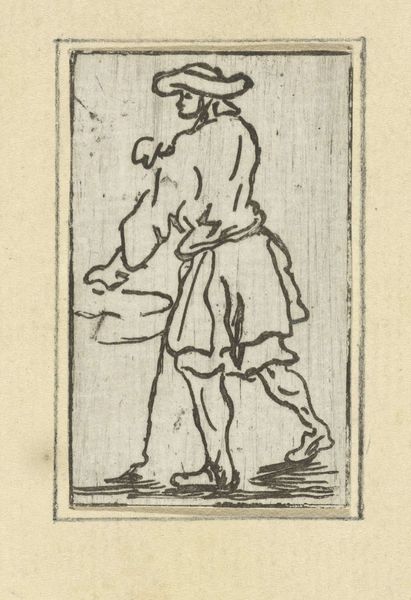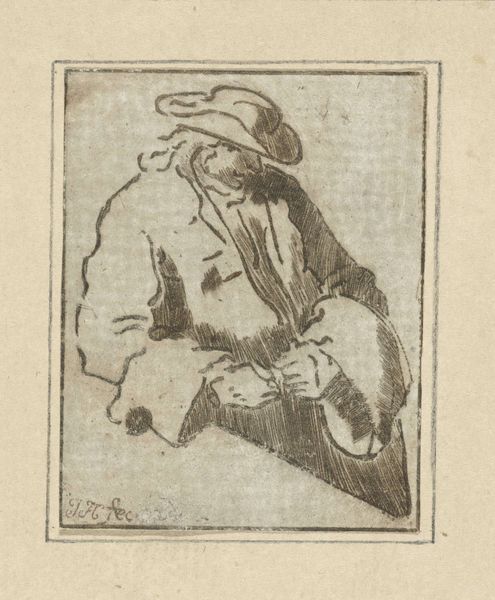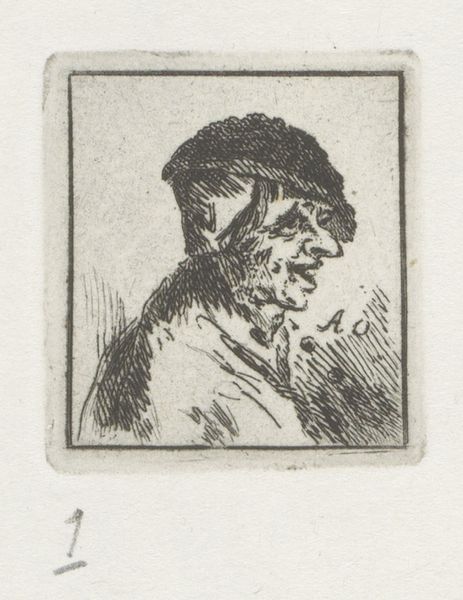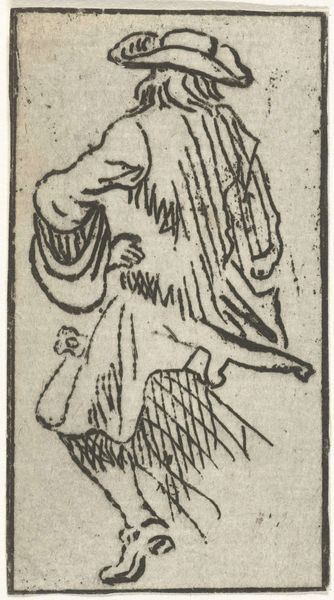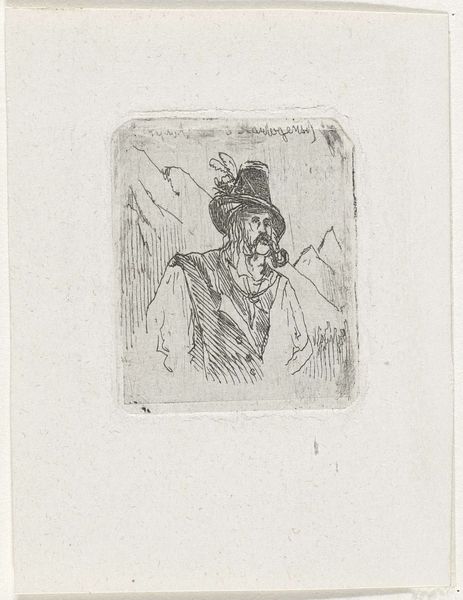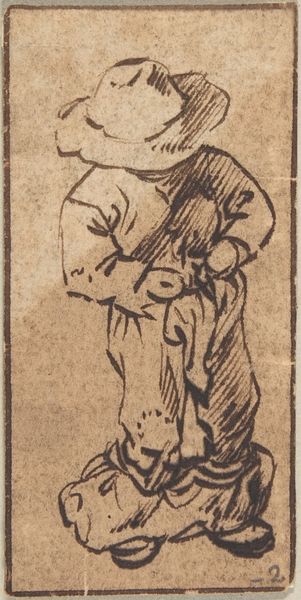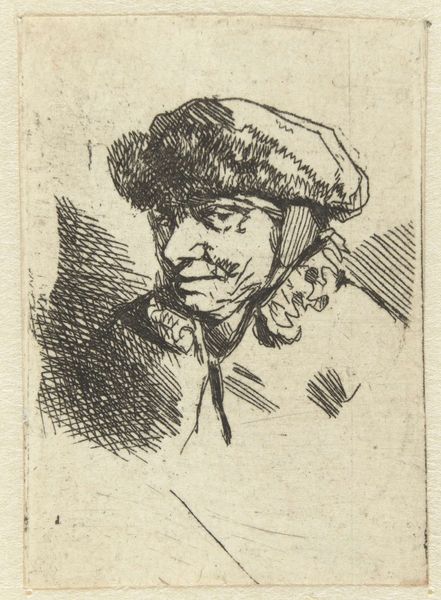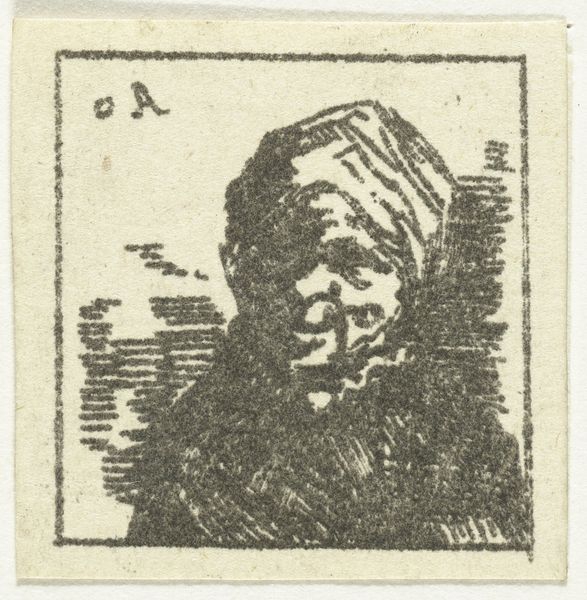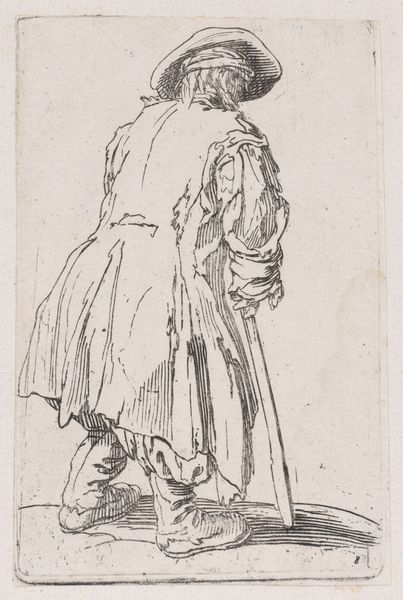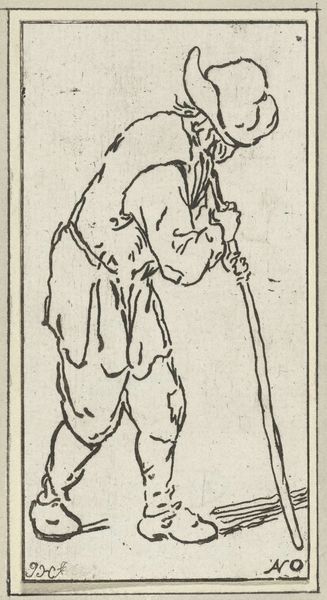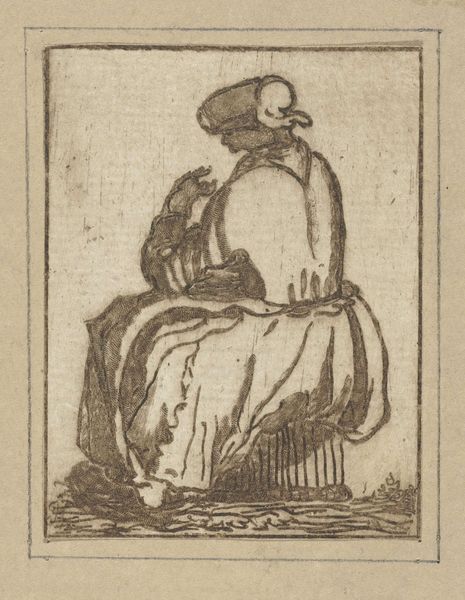
drawing, ink
#
portrait
#
drawing
#
caricature
#
ink
Dimensions: height 38 mm, width 33 mm
Copyright: Rijks Museum: Open Domain
Curator: This ink drawing, titled "Buste van een lachende boer," or "Bust of a Laughing Peasant," is attributed to Anthonie van den Bos and thought to have been made sometime between 1778 and 1838. What strikes you first? Editor: It’s striking how unrefined the execution appears. The hurried scratching of the ink. It speaks of something immediate, almost a caricature captured on the spot. I'm intrigued by the labor that *wasn't* invested; a quick and seemingly disposable image, not meant for long term admiration. Curator: The subject of a “laughing peasant" carries centuries of loaded symbolism. The image often evokes simple pleasures and carefree spirit, but consider that period; peasants were also stereotyped as ignorant or foolish. This plays into older folk traditions that sometimes depicted peasants as unruly during festivities. Editor: The very fact that it is ink on paper signals a level of accessibility to me. Think of the proliferation of pamphlets and political prints at the time. Was this image intended for a broad, perhaps even politically charged consumption, utilizing laughter to, perhaps, mock the ruling classes, by reversing stereotypes of low class citizens? Curator: Possibly, though caricature has often been used in either direction! Notice how certain features are exaggerated; his nose, his rather receding chin. There's also the almost frantic energy in the shading around him; there is some kind of story behind that frantic use of ink and shadows, making this both joyful and unnerving. Editor: Absolutely. And think of the role of caricature more broadly within visual culture. What is included? What is omitted? Ink, cheaply acquired, easily applied… its accessiblity itself is a language, in this era of class tensions. How many prints like this would be destroyed for every one preserved? Curator: That consideration reframes the piece. Rather than just a comical portrait, we see a window into the material culture of ephemeral images and potentially subversive iconography, pointing at deeply embedded class-conscious elements. Editor: Yes, a reminder that even a simple drawing can tell us about resource constraints, dissemination methods, and the fleeting expressions of socio-political tensions from centuries past.
Comments
No comments
Be the first to comment and join the conversation on the ultimate creative platform.
